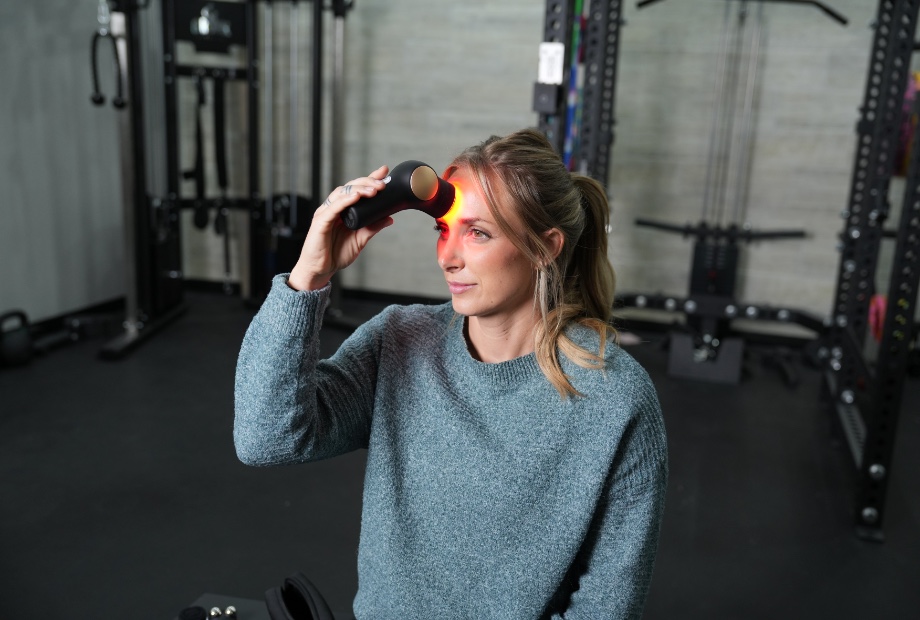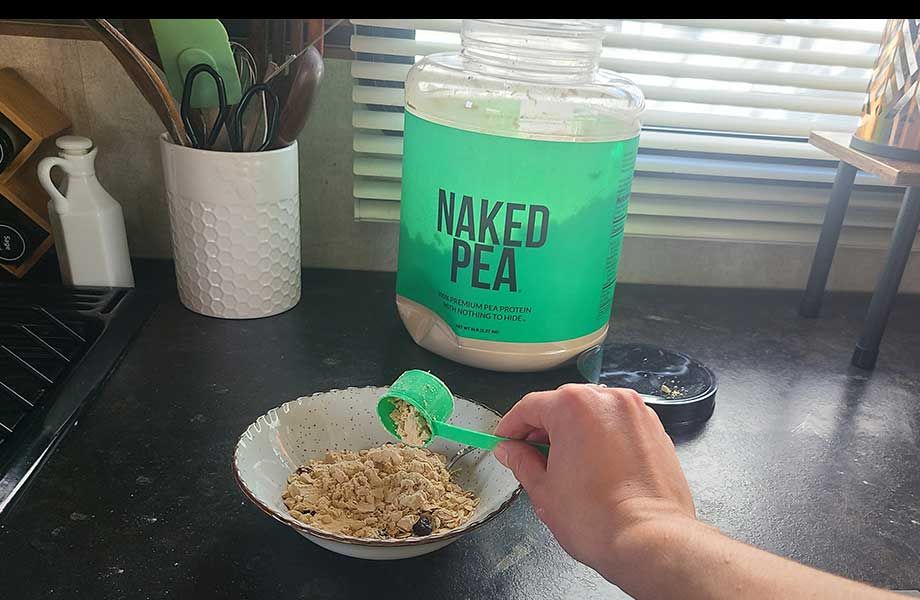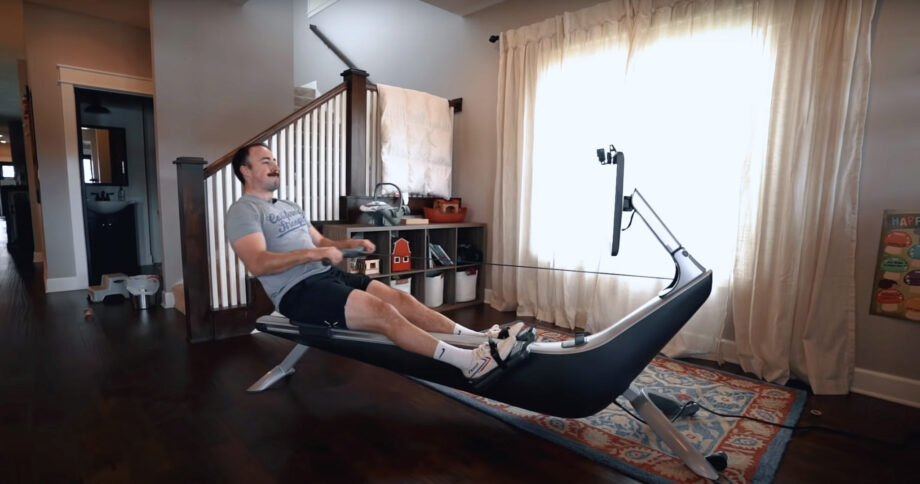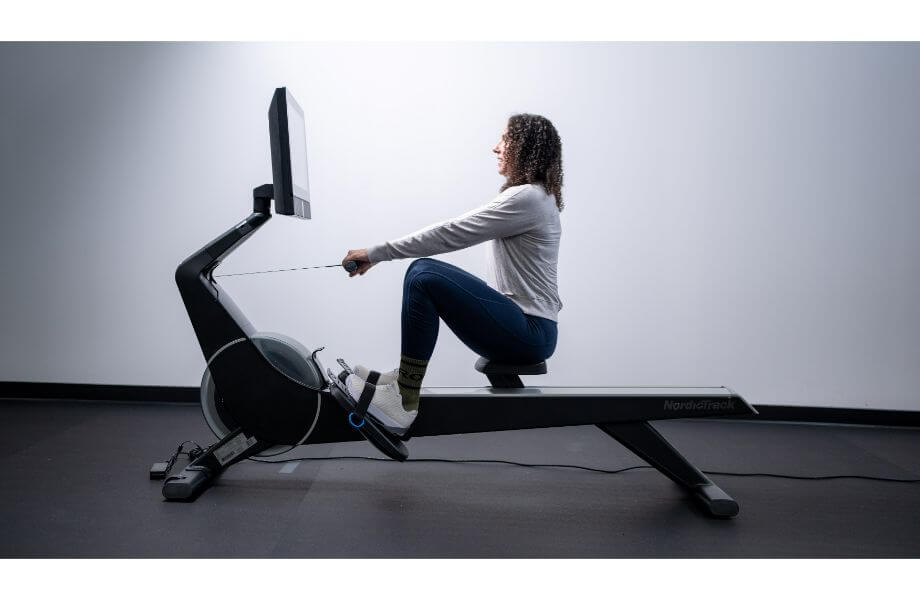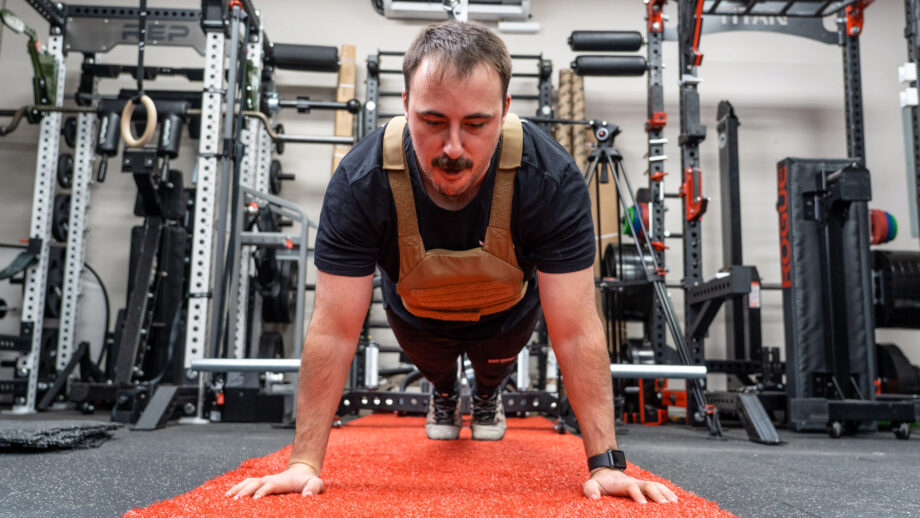The best biohacking products are often used to try to reverse aging or maximize athletic performance or recovery in as little time as possible.
While these products and “hacks” won’t outperform a nutrient-dense diet and dialed-in training program, these tools can definitely support your wellness routine.
One such recovery tool that’s been in the spotlight recently is red light therapy. This therapy uses low-level wavelengths of light to help with purported benefits such as muscle recovery, improved skin conditions, or pain relief.
What is red light therapy? And is it an effective treatment? While studies have barely scratched the surface of this muscle recovery tool, I’ll use the research available—as well as my experience as an Olympic athlete who’s used a variety of recovery methods in my 25-year-long weightlifting career, including red light therapy—to get into what red light therapy is, its efficacy, and any potential risks for users.
What Is Red Light Therapy?
Red light therapy, or RLT, is a non-invasive treatment using low-level wavelengths of deep red light or near-infrared light—or a combination of the two. The goal is to allow faster healing by providing more energy to your cells, particularly increasing activity in the powerhouse of your cells, the mitochondria.
Although LED light therapy and phototherapy had been studied years before, the modern use of red light therapy was stumbled upon by NASA in the 1990s1, when red and blue lights were studied for plants to drive photosynthesis in space. However, NASA scientists who worked with their hands underneath the lighting for long periods noticed that minor abrasions on their hands healed faster than normal.
Since then, scientists have researched and experimented with red light therapy to discover how it works, and to see which of the many purported benefits are fact or fiction. Red light therapy goes by quite a few different names, including:
- Photobiomodulation (PBM)
- Low-level laser therapy (LLLT)
- Low-power laser therapy (LPLT)
- Photonic stimulation
- Biostimulation
Regardless of the name, the principle of the recovery method is the same. With its growing popularity and use, you can find red light therapy devices at doctor’s offices, weight-loss centers, dermatology clinics, or spas—even at-home devices. It’s even used in a treatment to kill skin cancer cells called photodynamic therapy2.
How Does Red Light Therapy Work?
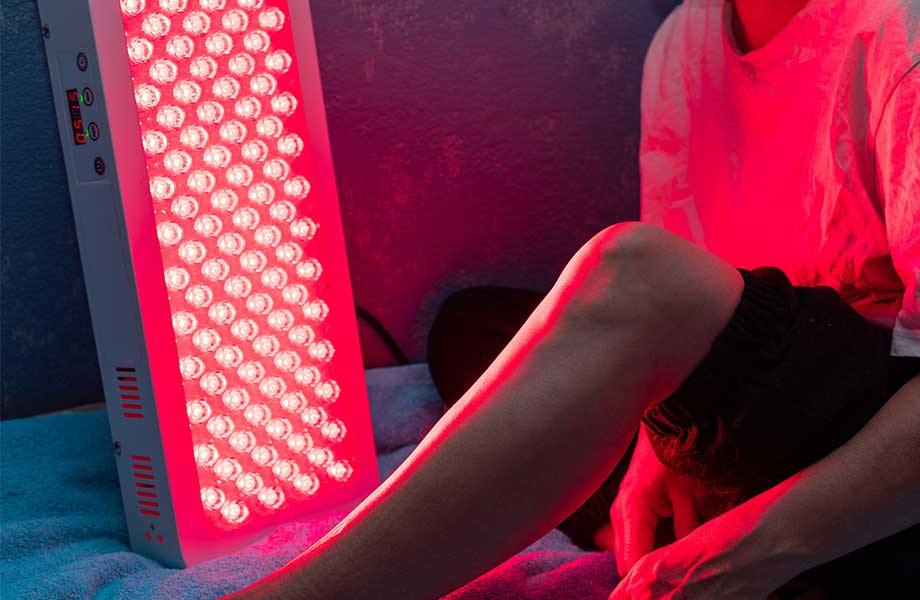
The goal of red light therapy is to excite and stimulate activity in the mitochondria, which in turn will boost adenosine triphosphate (ATP) production, a needed source of energy3 on the cellular level. To do this, red light devices produce wavelengths at specific frequencies, which are red light or near-infrared light.
- Red light is produced at a frequency of around 600 to 660 nanometers. According to a 2013 review4, red light can penetrate the skin about 1 or 2 millimeters deep, while deep red light (at around 660 nanometers) pierces as deep as 3 millimeters. Therefore, red lights are best for superficial and skin treatment.
- Near-infrared light has a frequency of about 850 nanometers, although it can be a bit more. At this frequency, however, near-infrared light can penetrate deeper into the skin, although the intensity dwindles as the light travels deeper. This type of light treatment can penetrate muscles and joints, aiding with recovery.
Red light and near-infrared light can have different frequencies than these, but studies5 have shown that the light treatment is most effective at these frequencies. Most devices using red light therapy use a deep red light frequency of 660 nanometers, a near-infrared frequency of 850 nanometers, or a combination of the two.
RELATED: Best Infrared Saunas
The intensity of the light, or its irradiance, on the applied area is an important factor as well, especially if we want deep penetration to muscles and joints. This is often measured in milliwatts per square centimeter (mW/cm2). Irradiance is best understood when the distance is known as well. A red light device will have a greater irradiance from a closer distance, which will dissipate the farther the light travels from the source.
Generally speaking, a light source with an irradiance over 120 milliwatts per square centimeter will provide deeper cellular penetration. Anything less, as low as 25 milliwatts per square centimeter, is adequate for surface treatments.
Is Red Light Therapy Effective?
The more consistent you are with red light therapy, the more effective its use will be. Most red light therapy devices are recommended for daily use.
While red light therapy is generally a safe treatment, that doesn’t mean it’s worth doing if you get nothing out of it. With that said, a good amount of research has been conducted over the last few decades that does show some promising benefits of red light therapy for treating certain skin conditions and for muscle recovery (more on that later).
RELATED: What Is Biohacking?
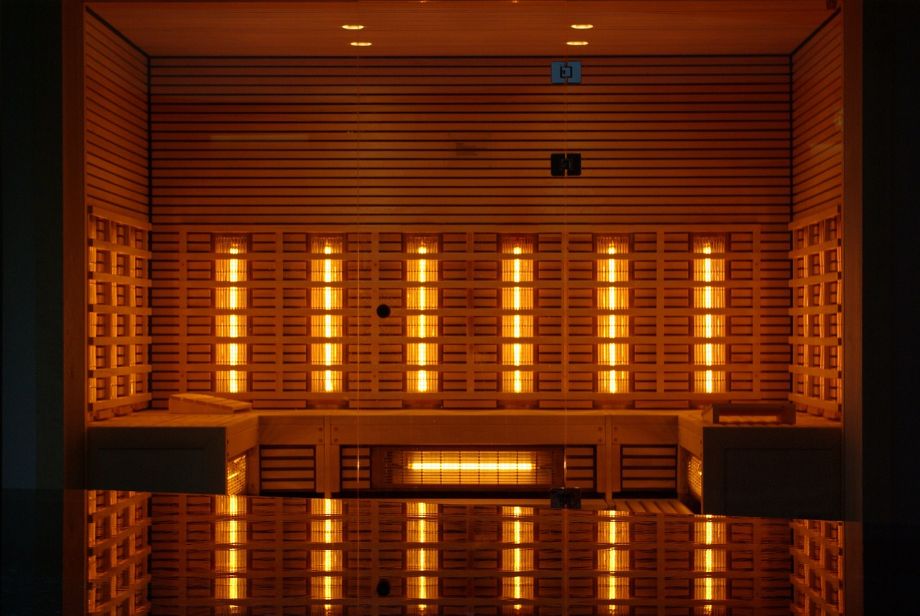
However, the verdict is still out for other alleged benefits. One such benefit is that red light therapy can help in weight loss. A 2018 study6 compared two groups that exercised—one with and one without sessions of red light therapy—and showed that after four weeks, the group with phototherapy had greater results in fat loss and other positive markers for health.
Still, many studies and trials studying red light therapy for weight loss are inconsistent. Long-term effects of red light therapy have also not been thoroughly studied, which makes it difficult to confirm its efficacy as a long-term solution.
As more clinical trials and studies are released, we’ll get a deeper understanding of red light therapy’s effectiveness on health conditions, weight loss, and even skin care7 and signs of aging. Until then, many of red light therapy’s potential benefits, while showing promise, won’t have enough research to back up the claims.
Types of Red Light Therapy Devices
There are many devices that emit red light therapy. You can purchase most devices for home use, but others may be too bulky to use at home.
- Handheld devices and guns: These devices use light-emitting diodes in a localized area to treat small spots. The concentrated area can also help penetrate deeper muscle groups.
- Wraps and blankets: Wraps or full blankets often use a combination of red and near-infrared light to treat muscles and joints.
- Panels: These panels are larger and used for more general therapy. Smaller ones are mounted on a stand, but they can be large enough to be mounted on a wall.
- Face masks: Face masks primarily use deep red light (some might use near-infrared light as well) to treat fine lines and wrinkles on the face, as well as other skin conditions like psoriasis.
- Light therapy beds: These are full-body light therapy devices that look strikingly similar to tanning beds. However, they’re decked out with red and near-infrared LEDs instead.
- Caps and helmets: These are made to be worn on your head and may help promote hair growth for those suffering from hair loss or alopecia.
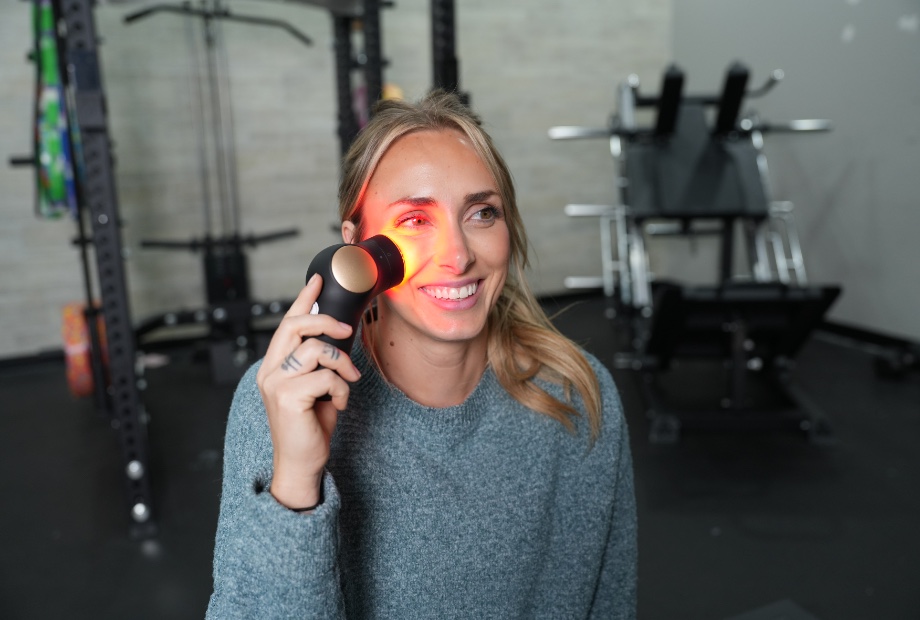
I’ve used a wrap to help with a knee injury I suffered from during a lifting competition, but each device has its specific uses. If you’re considering purchasing a red-light device, I’d recommend consulting a doctor or dermatologist to decide your best course of action.
Benefits of Red Light Therapy
I know I’ve been making it sound like red light therapy is a pseudoscience with the benefits of snake oil, but a lot of promising research has been done. Because the light therapy stimulates the area on a cellular level, there are a plethora of potential red light therapy benefits. Let’s go over the major health benefits supported by research and studies.
Potentially Helps Reduce Inflammation
Inflammation can be held in check through whole foods or anti-inflammatory foods like turmeric supplements, but red light therapy has been shown to also provide some inflammatory relief. A 2017 study8 demonstrates that reducing inflammation is one of the most reproducible benefits of red light therapy. In particular, inflammation reduction can be seen in the brain, abdominal fat, spinal cord, wounds, and lungs.
May Provide Pain Relief
The heat from near-infrared light therapy can help increase blood flow; paired with a reduction of inflammation, red light therapy can help relieve pain from chronic issues like tendonitis or arthritis. A study from the European Journal of Physical Rehabilitation Medicine9 shows that red light therapy has helped provide relief from knee pain, lower back pain, and other pain-related conditions. No matter what’s ailing you, it might be worth trying out some red light therapy on it.
May Aid With Muscle Recovery
Although progressive overload and resistance training can help build muscle and strength, it does so by creating micro-tears in the muscle—which then grow back stronger to adapt to the increased loads of your weight training. Faster and better recovery means more training and muscular adaptation, and red light therapy may help with that muscle recovery.
According to a 2017 systematic review10, red light devices can help heal and regenerate damaged muscle tissue. Even wilder is that the review goes on to say that this form of therapy can help build more muscle mass and reduce oxidative stress in the muscles.
May Help Accelerate Wound Healing
Red light therapy has been shown to accelerate wound healing and injuries by stimulating cells that help form connective tissues, called fibroblasts11. Another study from 202312 specifically saw increased wound healing on an in vitro sample of tissue (done in a lab), suggesting that the same results could happen to an in vivo (living organism) sample.
May Contribute to Improved Skin Health
If you’re looking for ways to improve your skin’s appearance, red light therapy might be able to support your needs. RLT has been used to help skin care by treating certain conditions—psoriasis, eczema, acne, or rosacea.

One study from Lasers In Medical Science13 shows that those suffering from psoriasis were able to clear 60% to 100% of lesions on their skin within a month by having two weekly red light therapy sessions during that time.
Another emerging use of red light therapy is in skin rejuvenation, to help provide anti-aging effects on your skin. A study from 202014 demonstrates that red light therapy has the potential to help treat aging by stimulating the fibroblast cells, which increases collagen production. Collagen is vital to the elasticity and structural integrity of your skin, as well as hair and nail health, too.
Are There Side Effects of Red Light Therapy?
Low-level laser light therapy is non-invasive and is generally considered a safe treatment option. However, there are a few factors to consider and look out for.
Red light therapy, and near-infrared light in particular, can heat the skin or area that the device is applied to. Extended periods of time with red light therapy can cause skin irritation, or in more severe cases, blistering and burns.
Another problem to consider is eye sensitivity—especially if you use a face mask or red light therapy bed. The lights on these light devices can cause eye irritation, so make sure to wear proper eye protection when using them.
RELATED: Infrared Sauna Dangers and Benefits
You shouldn’t use red light therapy if you’re pregnant or have a heightened eye sensitivity. If you have sensitive skin, talk to a dermatologist about whether RLT is an ideal option for skin care.
What Is Red Light Therapy? Final Thoughts
Red light therapy is a fast-emerging and very promising field of recovery and healthcare. Using a combination of deep red light and near-infrared light, red light devices can provide such benefits as:
- Reduced inflammation
- Reduced chronic or acute pain
- Improved muscle recovery
- Improved skin health
- Increased wound healing
While there are some minor risks associated with red light therapy, for most people, this is a safe treatment option to add to your health and fitness regimen.
What Is Red Light Therapy? FAQs
Who should not use red light therapy?
People who have heightened eye or skin sensitivity may want to consult a doctor before using red light therapy. Also, do not use red light therapy if you are pregnant.
Can red light therapy reduce belly fat?
While some studies do show that weight loss is a possible benefit of red light therapy, the research is mixed and limited so far. Also, the idea of targeted fat loss, known as spot reduction, is a myth, as you can’t specifically target where you lose fat. Studies with red light therapy don’t show fat spot reduction either.
Your best options for losing fat are consistent exercise and a proper diet with whole foods, particularly high-protein foods.
RELATED: High-Protein Foods for Weight Loss
How often should I use red light therapy?
The frequency of using red light therapy depends on the type of device you’re using, as well as the desired effect of the therapy. For face masks or skin care, two or three sessions a week are usually ideal for most people. However, for deeper muscle and joint tissues, daily use is often recommended.
References
- NASA research illuminates medical uses of light | NASA spinoff. (n.d.-b). https://spinoff.nasa.gov/NASA-Research-Illuminates-Medical-Uses-of-Light
- Agostinis, P., Berg, K., Cengel, K. A., Foster, T. H., Girotti, A. W., Gollnick, S. O., Hahn, S. M., Hamblin, M. R., Juzeniene, A., Kessel, D., Korbelik, M., Moan, J., Mroz, P., Nowis, D., Piette, J., Wilson, B. C., & Golab, J. (2011). Photodynamic therapy of cancer: an update. CA: a cancer journal for clinicians, 61(4), 250–281. https://doi.org/10.3322/caac.20114
- Dunn, J., & Grider, M. H. (2023). Physiology, Adenosine Triphosphate. In StatPearls. StatPearls Publishing.
- Avci, P., Gupta, A., Sadasivam, M., Vecchio, D., Pam, Z., Pam, N., & Hamblin, M. R. (2013). Low-level laser (light) therapy (LLLT) in skin: stimulating, healing, restoring. Seminars in cutaneous medicine and surgery, 32(1), 41–52.
- Tafur, J., & Mills, P. J. (2008). Low-intensity light therapy: exploring the role of redox mechanisms. Photomedicine and laser surgery, 26(4), 323–328. https://doi.org/10.1089/pho.2007.2184
- da Silveira Campos, R. M., Dâmaso, A. R., Masquio, D. C. L., Duarte, F. O., Sene-Fiorese, M., Aquino, A. E., Jr, Savioli, F. A., Quintiliano, P. C. L., Kravchychyn, A. C. P., Guimarães, L. I., Tock, L., Oyama, L. M., Boldarine, V. T., Bagnato, V. S., & Parizotto, N. A. (2018). The effects of exercise training associated with low-level laser therapy on biomarkers of adipose tissue transdifferentiation in obese women. Lasers in medical science, 33(6), 1245–1254. https://doi.org/10.1007/s10103-018-2465-1
- Ngoc, L. T. N., Moon, J. Y., & Lee, Y. C. (2023). Utilization of light-emitting diodes for skin therapy: Systematic review and meta-analysis. Photodermatology, photoimmunology & photomedicine, 39(4), 303–317. https://doi.org/10.1111/phpp.12841
- Hamblin M. R. (2017). Mechanisms and applications of the anti-inflammatory effects of photobiomodulation. AIMS biophysics, 4(3), 337–361. https://doi.org/10.3934/biophy.2017.3.337
- DE Oliveira, M. F., Johnson, D. S., Demchak, T., Tomazoni, S. S., & Leal-Junior, E. C. (2022). Low-intensity LASER and LED (photobiomodulation therapy) for pain control of the most common musculoskeletal conditions. European journal of physical and rehabilitation medicine, 58(2), 282–289. https://doi.org/10.23736/S1973-9087.21.07236-1
- Ferraresi, C., Huang, Y. Y., & Hamblin, M. R. (2016). Photobiomodulation in human muscle tissue: an advantage in sports performance?. Journal of biophotonics, 9(11-12), 1273–1299. https://doi.org/10.1002/jbio.201600176
- Fibroblast. (n.d.). Genome.gov. https://www.genome.gov/genetics-glossary/Fibroblast
- Giannakopoulos, E., Katopodi, A., Rallis, M., Politopoulos, K., & Alexandratou, E. (2022). The effects of low power laser light at 661 nm on wound healing in a scratch assay fibroblast model. Lasers in medical science, 38(1), 27. https://doi.org/10.1007/s10103-022-03670-5
- Zhang, P., & Wu, M. X. (2018). A clinical review of phototherapy for psoriasis. Lasers in medical science, 33(1), 173–180. https://doi.org/10.1007/s10103-017-2360-1
- Huang, A., Nguyen, J., Ho, D., & Jagdeo, J. (2020). Light emitting diode phototherapy for skin aging. Journal of Drugs in Dermatology, 19(4), 359–364. https://doi.org/10.36849/jdd.2020.4711


